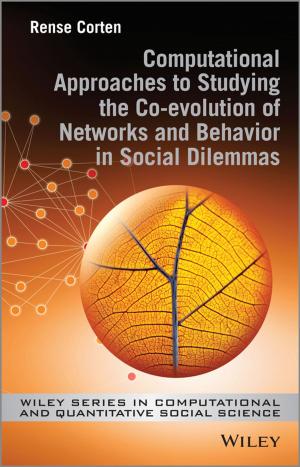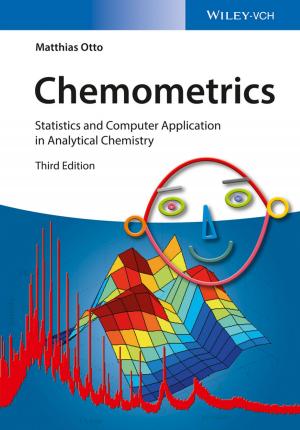Computational Methods for Next Generation Sequencing Data Analysis
Nonfiction, Computers, Programming| Author: | Ion Mandoiu, Alexander Zelikovsky | ISBN: | 9781119272175 |
| Publisher: | Wiley | Publication: | September 12, 2016 |
| Imprint: | Wiley | Language: | English |
| Author: | Ion Mandoiu, Alexander Zelikovsky |
| ISBN: | 9781119272175 |
| Publisher: | Wiley |
| Publication: | September 12, 2016 |
| Imprint: | Wiley |
| Language: | English |
Introduces readers to core algorithmic techniques for next-generation sequencing (NGS) data analysis and discusses a wide range of computational techniques and applications
This book provides an in-depth survey of some of the recent developments in NGS and discusses mathematical and computational challenges in various application areas of NGS technologies. The 18 chapters featured in this book have been authored by bioinformatics experts and represent the latest work in leading labs actively contributing to the fast-growing field of NGS. The book is divided into four parts:
Part I focuses on computing and experimental infrastructure for NGS analysis, including chapters on cloud computing, modular pipelines for metabolic pathway reconstruction, pooling strategies for massive viral sequencing, and high-fidelity sequencing protocols.
Part II concentrates on analysis of DNA sequencing data, covering the classic scaffolding problem, detection of genomic variants, including insertions and deletions, and analysis of DNA methylation sequencing data.
Part III is devoted to analysis of RNA-seq data. This part discusses algorithms and compares software tools for transcriptome assembly along with methods for detection of alternative splicing and tools for transcriptome quantification and differential expression analysis.
Part IV explores computational tools for NGS applications in microbiomics, including a discussion on error correction of NGS reads from viral populations, methods for viral quasispecies reconstruction, and a survey of state-of-the-art methods and future trends in microbiome analysis.
Computational Methods for Next Generation Sequencing Data Analysis:
- Reviews computational techniques such as new combinatorial optimization methods, data structures, high performance computing, machine learning, and inference algorithms
- Discusses the mathematical and computational challenges in NGS technologies
- Covers NGS error correction, de novo genome transcriptome assembly, variant detection from NGS reads, and more
This text is a reference for biomedical professionals interested in expanding their knowledge of computational techniques for NGS data analysis. The book is also useful for graduate and post-graduate students in bioinformatics.
Introduces readers to core algorithmic techniques for next-generation sequencing (NGS) data analysis and discusses a wide range of computational techniques and applications
This book provides an in-depth survey of some of the recent developments in NGS and discusses mathematical and computational challenges in various application areas of NGS technologies. The 18 chapters featured in this book have been authored by bioinformatics experts and represent the latest work in leading labs actively contributing to the fast-growing field of NGS. The book is divided into four parts:
Part I focuses on computing and experimental infrastructure for NGS analysis, including chapters on cloud computing, modular pipelines for metabolic pathway reconstruction, pooling strategies for massive viral sequencing, and high-fidelity sequencing protocols.
Part II concentrates on analysis of DNA sequencing data, covering the classic scaffolding problem, detection of genomic variants, including insertions and deletions, and analysis of DNA methylation sequencing data.
Part III is devoted to analysis of RNA-seq data. This part discusses algorithms and compares software tools for transcriptome assembly along with methods for detection of alternative splicing and tools for transcriptome quantification and differential expression analysis.
Part IV explores computational tools for NGS applications in microbiomics, including a discussion on error correction of NGS reads from viral populations, methods for viral quasispecies reconstruction, and a survey of state-of-the-art methods and future trends in microbiome analysis.
Computational Methods for Next Generation Sequencing Data Analysis:
- Reviews computational techniques such as new combinatorial optimization methods, data structures, high performance computing, machine learning, and inference algorithms
- Discusses the mathematical and computational challenges in NGS technologies
- Covers NGS error correction, de novo genome transcriptome assembly, variant detection from NGS reads, and more
This text is a reference for biomedical professionals interested in expanding their knowledge of computational techniques for NGS data analysis. The book is also useful for graduate and post-graduate students in bioinformatics.















